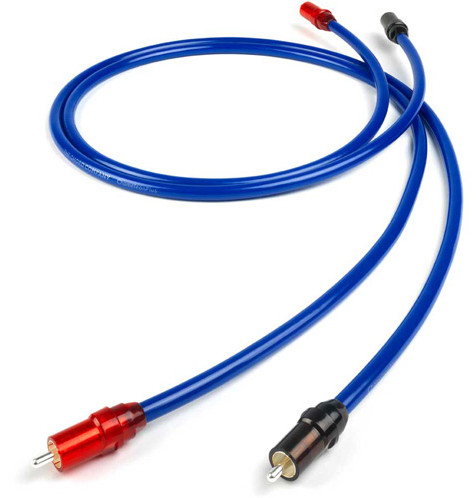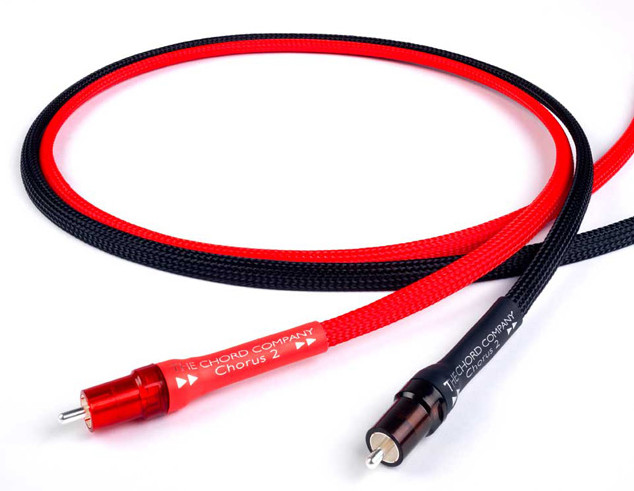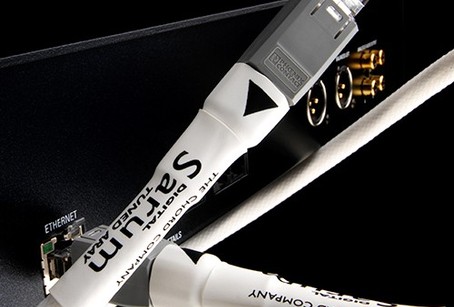Audio cables ... don't ignore the importance
Posted by The Sound Organisation on Jul 20th 2018
Originally published May 20, 2015
Audio Cables can be the "make it or break it" in your HiFi System
Throughout most of my early audio career in an Edinburgh hi-fi store I thought of audio cables as a necessary evil not worthy of any major investment. This was the common wisdom in the Hi-Fi community 40 years ago and is still often the mindset today.
My lesson in the importance of “the wires” became apparent when a colleague told me about low frequency noise (that hum sound) and its effect on my stereo. To check for this problem I was told to simply select the turntable input and crank the volume to full; then listen at the speakers for the resultant hum. I was then instructed to move equipment/cable routing etc. until I got the hum down to a minimum. I was absolutely staggered at the difference and proceeded to lecture anyone that would listen on how they could upgrade their systems for free.
With the advent of better material technology computing power and production techniques, today’s Hi-Fi systems are more accurate and affordable. The problem of hum is still with us, but now we have to deal with another major source of disruption - high frequency noise (HF).
Quality cables are the most obvious route towards reducing high frequency noise. Any cable in your system can act as an antenna - both transmitting and receiving signals. Typical HF sources include low voltage lights; switch mode power supplies; phone chargers; mobile phones; Wi-Fi and Bluetooth to name a few. Each device is legally regulated as to the amount this noise can emit. Yet, it’s when you count up the number of them in your home that the problem adds up.
This noise, even in very small quantities, has a major effect on the sound.
Choosing the right audio cable
Choosing the right cable goes a long way in fixing the HF issue. Following are basic guidelines that we recommend when trying to maximise the performance of Chord cables. As with all equipment, you have inexpensive and expensive options. Our final word though - LISTEN BEFORE YOU BUY. If you can’t hear a difference, then don’t buy it!
Good Cable Features

- A good high frequency shield
- The insulation material in direct contact with the conductors should be expanded polyethylene (not PVC).
- The copper should have a protective coating of silver plating. The minimum quality of insulation needs to be PTFE or Teflon™.
- There should be a minimal amount of metal around the connector contacts. More metal results in more HF noise pick up and other issues. For example the Chord VEE3 plug
Examples of good Chord cable are the Chameleon (pictured above).
Better Cable Features
All of the above, plus:
- The high frequency shielding should be a much higher standard, normally a braid in conjunction with an overlapping foil.
- More silver plated copper to carry the signal and return.

The purity of the copper is not the only issue. At this level it should already be at the highest standard. What now needs addressing is the precision of the extrusion. The surface of the strands of copper needs a flatter smoother ripple free finish. The extrusion process that produces these wires is done with a much higher precision and takes more effort to achieve. It may look the same but when you listen to the difference it justifies the extra effort and expense. The manufacturers of wires with these higher specifications tend to be located either in Europe or the UK. At this level of cable, Chord fits a simple version of our ARAY technology. This helps prevent noise from being added to the music signal. On speaker cables, both the plus and minus wire are individually screened from each other rather than both wires being protected by one big outer jacket.
Examples of better Chord cables are …The Chorus (pictured above) and Anthem.
Best Cable Features
All of the above, plus:

- The wires and shielding are fabricated to the highest possible standards. The copper wire is micro polished to a mirror finish then silver plated, which is again polished to a mirror finish. A layer of dry Nitrogen foamed PTFE is added onto the outside of these wires and then the cable is shielded with silver-plated copper and foil braids. Another outer jacket of PTFE is added to protect the final assembly.
At Chord, the attention to detail and care is continued when our best technicians, using the very highest quality solder connectors and ARAY technologies, assemble these cables.
Examples of the best Chord cables are …Sarum Tuned ARAY and the new flagship Chord Music.
Small Upgrades Can Make a Difference
40 years ago, when I first became aware of the value of cables, it was sensible to allow about 10% of your budget on cables. In our current noise filled world, this is no longer the case! It is very easy nowadays to justify a 20-25% allocation...go listen.
Any audio cable 5 years or older will not have the HF protection in its design. If that’s your system, we would suggest you visit with one of the experts at the Sound Organisation. It could be a small investment, yet the price of using a good HF shield will greatly outperform your state of the art “unprotected” cables. If you’re a new customer, hopefully this information will help you decide.
At Chord, we are confident that when you hear what you’re missing you won’t be disappointed. The great thing about upgrading your cables is that your entire music collection takes on a new dimension in involvement and pleasure. That’s our motivation when designing our products in the first place. If it costs more then it has got to really make you smile (and that’s from a Scotsman!).
About the Author: Alan Gibb is managing director of The Chord Company Ltd, UK. You can learn more about The Chord Company from its website or via Facebook, Twitter or YouTube.

